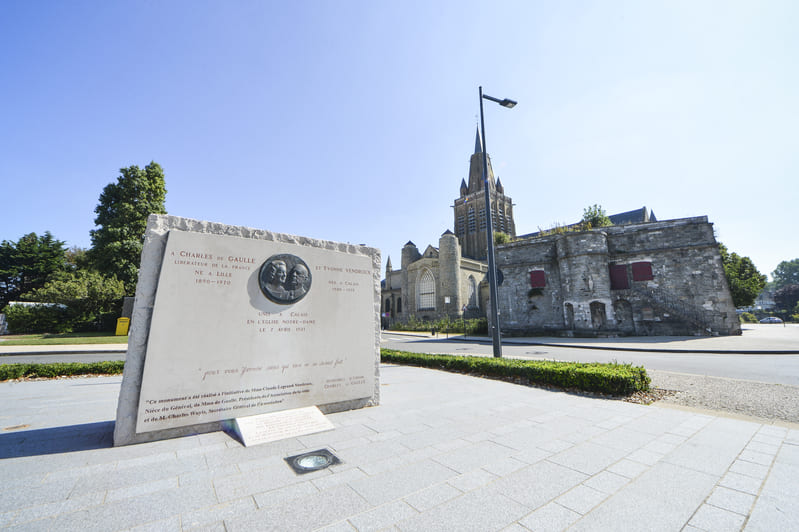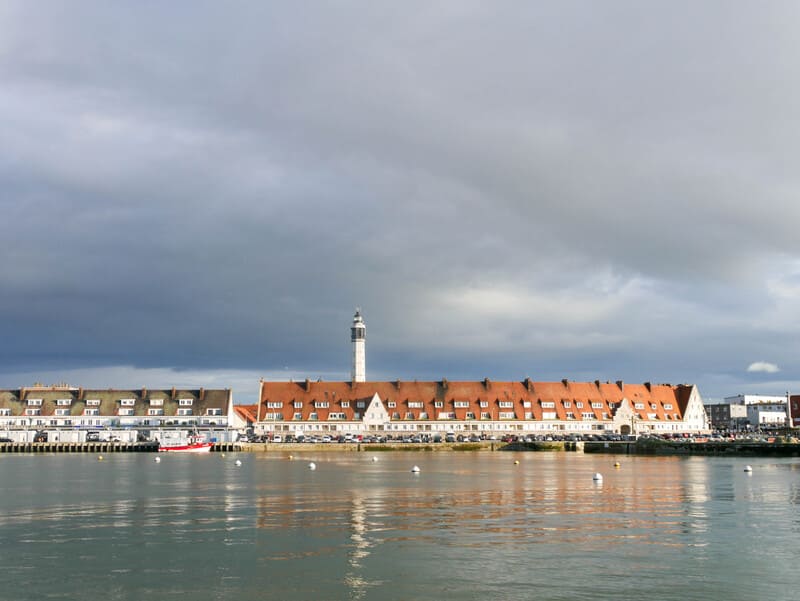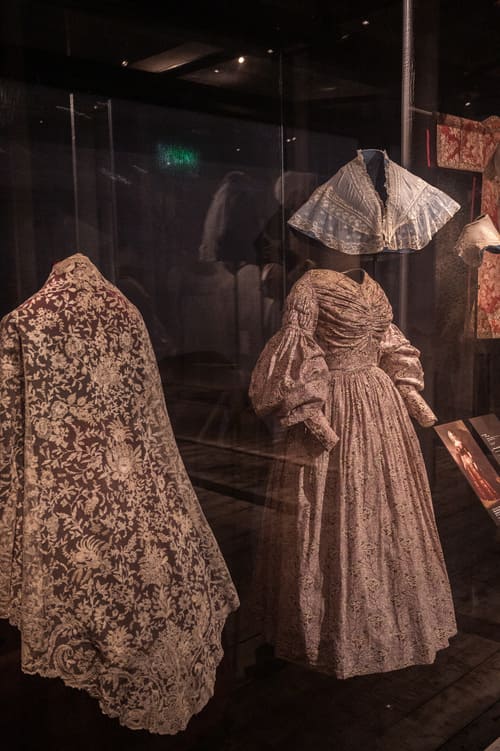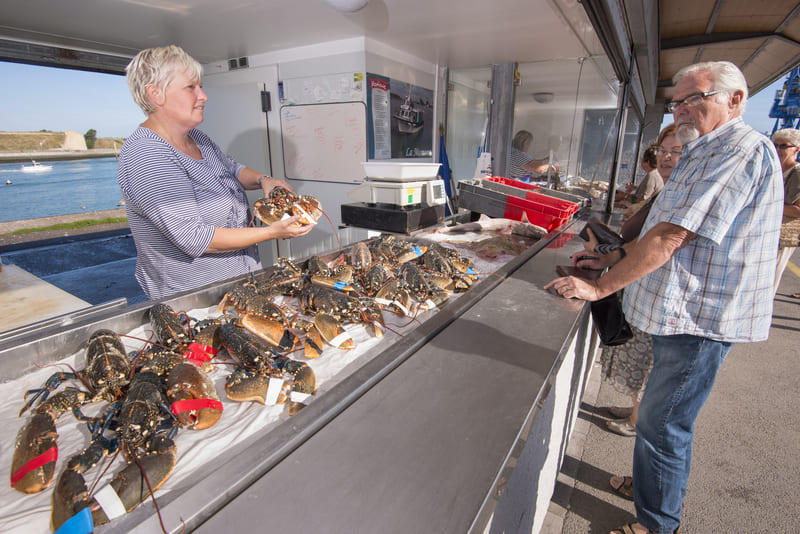Calais, the gateway to the Channel
Capital of lace, the leading passenger port in continental Europe, gateway to the Channel Tunnel, Calais has managed to retain its history as a fortified town and its 3 masterpieces by Vauban: Fort Risban, the Citadel and Fort Nieulay.
People also visit Calais to admire Rodin’s famous work « The Burghers of Calais », which stands in front of the town hall. The town of the six burghers boasts the prestigious « City of Art and History » label.
A visit to the port town is also a chance to take ride on a dragon.
The seafront promenade boasts pedestrianised paths lined with art installations and cycle lanes. The jazzed-up esplanade also features dedicated event and community spaces, a skate park and open-air exercise and play zones.
Public transport is free of charge in Calais, Coquelles, Coulogne, Marck, Blériot/Sangatte and Guînes !
What to visit in CALAIS
The dragon on the seafront
Dragon of Calais has become the seaside resort’s hottest ticket. Constructed out of wood and steelpanels, the animatronic fire-breather has all the spine-chilling hallmarks of the creature of legends – and nightmares.
Plumes of smoke rise from its scaly skeleton. It can bat its eyelids, prick its ears, bare its fanged maw, flick its tongue, lie down and gallop at a speed of 4km per hour.
And this fearsome fellow isn’t just for show: a plucky few can climb up its tail to a covered panoramic platform saddled onto its winged back 10m above ground, for a hair-raising ride along the seafront.
Prefer to keep your feet on the ground? Just drop by the saurian’s glass lair on the beach to observe it from a safe distance.
Take a tour aboard the Calais Dragon
The Burghers of Calais
This was one of the most famous episodes of the 100 Years War and one that the people of Calais recount with great pride. In 1346, Calais was under siege by the army of Edward III, King of England. After many long years, the people were starving and the situation looked grim.
Six burghers decided to surrender to the monarch, barefoot and wearing white shirts, with a rope around their necks, in order to hand over the keys to the city. They offered Edward III a trade: their lives for those of the citizens. Queen Philippine de Hainaut, impressed by their courage and sacrifice, asked her husband to spare them from the hangman.
500 years later, the city called upon French sculptor Auguste Rodin to immortalise their heroes.
The six burghers of Calais – © lescoflocs
The Town Hall of Calais
This is the jewel of modern Calais, designed by architect Debrouwer.
The tip of the bell tower reaches a height of 175 metres and the façade is in the Flemish Renaissance style.
It is one of the key monuments of the city.
The Fortifications of Calais
The Tour du Guet watchtower, built on the Place d’Armes around 1224 by Philippe Hurepel, Count of Boulogne, is the oldest building in the city. Standing 23m tall, the watchtower is a model of defensive architecture.
It has fulfilled the role of lighthouse, dovecote and military post and the Chappe telegraph was even installed there.
Even though more than 70% of the city was destroyed by bombardments during the Second World War, the tower remained standing.
On the other side of the fore-port lie the ruins of Fort Risban, dating back to the English occupation and redesigned at the end of the XVI Century.
Fort Nieulay
This unique example of a fortified lock was built between the XIV Century and the early XVI Century.
It was the strategic point of the English defences.
This fortress protected a system of locks that were at risk of flooding the area if attacked.
It is now a very calm and peaceful spot that attracts a great many walkers.
The Church of Notre-Dame
The only French church built in the Tudor style, it was severely damaged by the bombardments of the Second World War.
Not very tall, like many British churches, it has no buttresses or flying-buttresses.
The transept is a replica of the one found at Carlisle Cathedral in Great Britain and it was here that Charles de Gaulle married Yvonne Vendroux in 1921.
The church of Notre-Dame – © Y. Cadart
Le courgain martime quarter – © A. Chaput
Le Courgain maritime quarter
Situated in between the port and the city, it was destroyed in 1940 and rebuilt in a circular arc flanked by a wall that recalls its ramparts, the extremities of its gargoyles symbolising the cannons of the pirate ships that stopped at these ports.
Every year, on the Feast of the Ascension and according to a tradition that is continued to this day, mass is celebrated at the church of Le Courgain in memory of those who have drowned at sea followed by a benediction of the sea.
The Lighthouse of Calais
175 metres tall, it offers a special view across the city and the surrounding area.
Anyone who wants to enjoy this view must first tackle its 271 steps.
Highlights in Calais
The Cité de la Dentelle et de la Mode lace centre
© Les Globes blogueurs
The Cité de la Dentelle et de la Mode lace centre
The only one of its kind, the Cité de la Dentelle et de la Mode takes you to the very heart of an authentic lace factory of the XIX Century. Its vast rooms present the history and techniques, but not just that! Lingerie, haute couture and the most contemporary aspects of lace work are also showcased. The highpoint of the visit: discovering how lace is made.
Discover the current exhibition: « Dentelle ect » brings together contemporary pieces inspired by the theme of lace, created by artists who were born, studied or set up base in the Hauts-de-France.
The Museum of Fine-Arts
Opposite Parc Richelieu, the museum presents a magnificent collection of paintings, sculptures and photographs from the XVI to XXI Centuries.
A hall devoted to Auguste Rodin allows you to understand just how the sculptor created the Six Burghers of Calais.
Le Channel
These former abattoirs converted into a national theatre with modular halls are also a residence for artists.
Here you can enjoy shows and recitals, have lunch (the « Aux Grandes Tables » restaurant), Le Channel is a bewitching and convivial venue with a different programme every year.
Shopping in Calais
The main shopping streets of Calais are Boulevard Jacquard and Boulevard Lafayette, as well as Rue Royale. Just a few kilometres away, Cité Europe and Outlet Channel provide a shoppers’ paradise.
Market days are Wednesday and Saturday at Place d’Armes, as well as Thursday and Saturday at Place Crèvecoeur.
Fish and seafood are on sale at the port every day.
Fish Market in Calais © F. Astier
More coastal towns to visit
Boulogne
Le Touquet
Berck
Etaples
Top ten seaside attractions
See, do, eat and more







